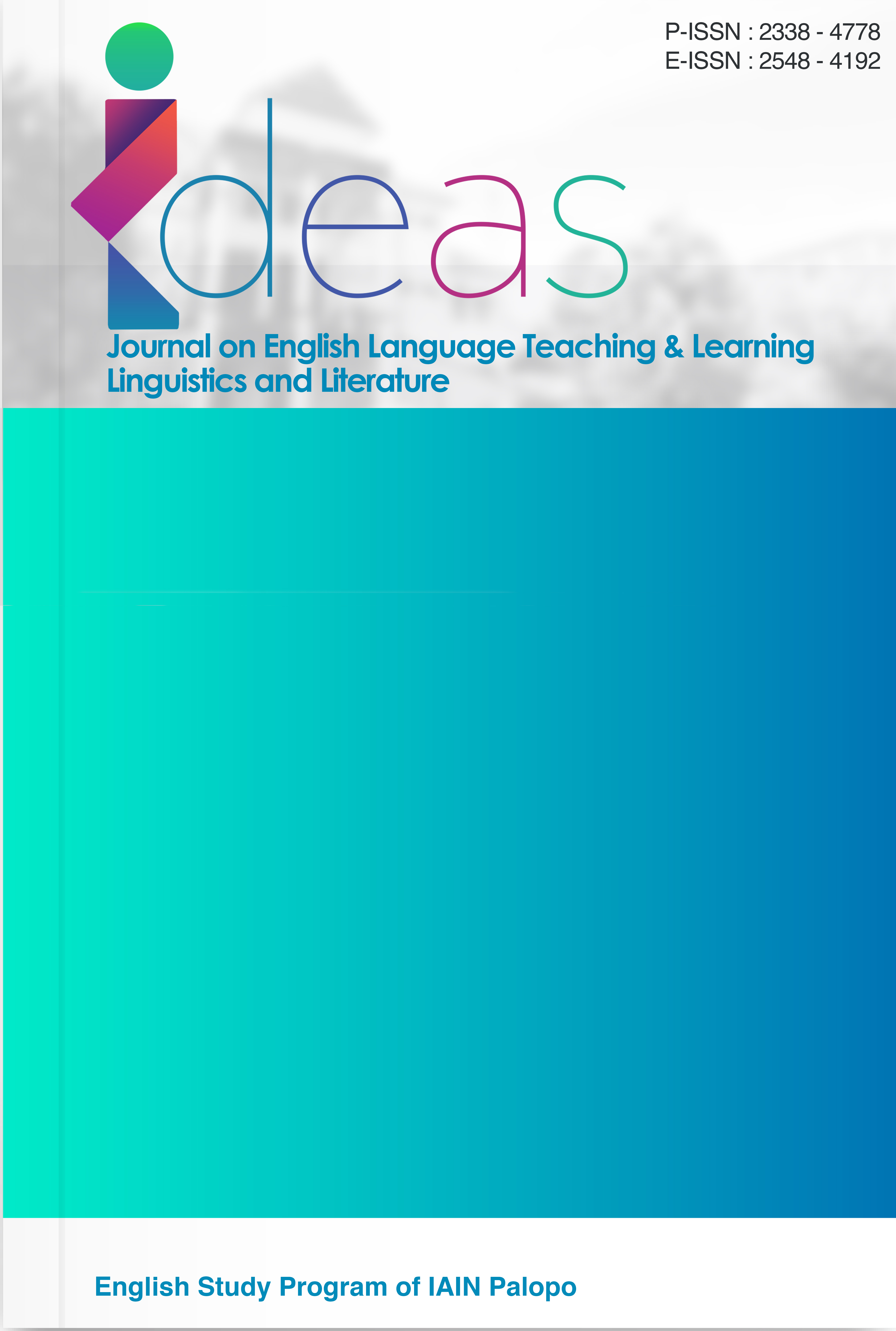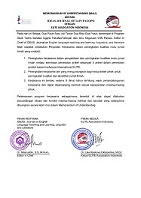The Influence of Children's Literature on Character Education with an Ethnopedology Approach for Grade VI Students Elementary School
DOI:
https://doi.org/10.24256/ideas.v13i2.6846Keywords:
Children LiteratureAbstract
This study explores the influence of children's literature—particularly Torajan folklore—on character education through an ethnopedagogic approach at SDN 3 Rantepao. Using a qualitative case study method, the research investigates how traditional stories such as Polopadang can foster core character values including honesty, hard work, gratitude, and cultural respect among sixth-grade students. Data were collected through interviews, classroom observations, documentation, and student questionnaires. The findings reveal that integrating local culture into learning activities significantly enhances students’ moral development and cultural identity. For example, students' understanding of honesty increased from 16% to 100%, and observable behaviors such as admitting mistakes and completing assignments honestly also improved. The ethnopedagogic approach proved effective in contextualizing moral values within the students' cultural environment, making character education more meaningful and impactful. This study affirms the importance of utilizing local wisdom in education to build character and preserve traditional heritage in the face of modern challenges.
References
Abdurrahman, M., Ariyani, N., Nurulsari, N., Maulina, E., & Sukamto, T. (2020). Ethnopedagogy and multicultural education.
Brown, H.D. (2004). Language assessment: Principles and classroom practices. Longman.
Bland, J. (2018). Teaching English to young learners: Critical issues in language teaching with 3–12-year-olds. Bloomsbury Publishing.
Elkind, D. (2007). The hurried child: Growing up too fast too soon. Da Capo Press.
Hazeira, A. (2012). The role of folklore in cultural preservation and identity. Journal of Cultural Studies, 14 (1), 22–30.
Hunt, P. (2011). Children's literature. Wiley-Blackwell.
Hutomo, S. (1991). Folklore in literary and folklore studies
Kant, I. (1785). Groundwork of the Metaphysics of Morals.
Moleong, LJ (2005). Qualitative Research Methodology. Bandung: PT Remaja Rosdakarya.
McGillis, R. (2009). Reading children's literature: A critical introduction. Modern Language Association Press.
Nurgiyantoro, B. (2010). Children's literature: Introduction to theory and learning. Yogyakarta: Gadjah Mada University Press.
Oktavianti, D., & Ratnasari, M. (2018). Integration of ethnopedagogy in local wisdom-based learning. Journal of Multicultural Education, 6 (3), 45–57.
Panglipur, D., & Listiyaningsih, T. (2017). Children's literature as a medium for character education. Journal of Character Education, 8 (1), 22–33.
Santoso, S. (2019). Folk tales as a medium for character education. Jakarta: Gramedia.
Suyanto, S. (2020). Local culture-based education as a strategy for preserving traditional values. National Education Journal, 15 (2), 88–100.
Toraja Tourism. (2014). The heritage and culture of Toraja . Makassar: Sulawesi Heritage.
Miles, MB, & Huberman, AM (1992). Qualitative Data Analysis: A Sourcebook of New Methods. Translated by Tjetjep Rohendi Rohidi. Jakarta: Il Pres.
Panglipur, D., & Listiyaningsih, T. (2017). Children's literature as a medium for character education. Journal of Character Education, 8(1), 22–33.
Juanda. (Year not mentioned). Revitalization of values in Fairy Tales as a vehicle for character formation of early childhood. Faculty of Language and Literature, Makassar State University.
Lebang, JB (Year not mentioned). Social values in Ulelean Pare Toraya (Turaya Folk Tale) the story of Polo Padang.
Wahyudin, D. (2009). Humanization in education: Efforts to humanize humans.
Downloads
Published
Issue
Section
Citation Check
License
Copyright (c) 2025 Herlina Payuk Allo, Rita Tanduk, Dina Gasong

This work is licensed under a Creative Commons Attribution-ShareAlike 4.0 International License.
Authors retain copyright and grant the journal right of first publication with the work simultaneously licensed under an Attribution-ShareAlike 4.0 International (CC BY-SA 4.0) that allows others to share the work with an acknowledgement of the work's authorship and initial publication in this journal.
Authors are able to enter into separate, additional contractual arrangements for the non-exclusive distribution of the journal's published version of the work (e.g., post it to an institutional repository or publish it in a book), with an acknowledgement of its initial publication in this journal.
Authors are permitted and encouraged to post their work online (e.g., in institutional repositories or on their website) prior to and during the submission process, as it can lead to productive exchanges, as well as earlier and greater citation of published work (See the Effect of Open Access)




